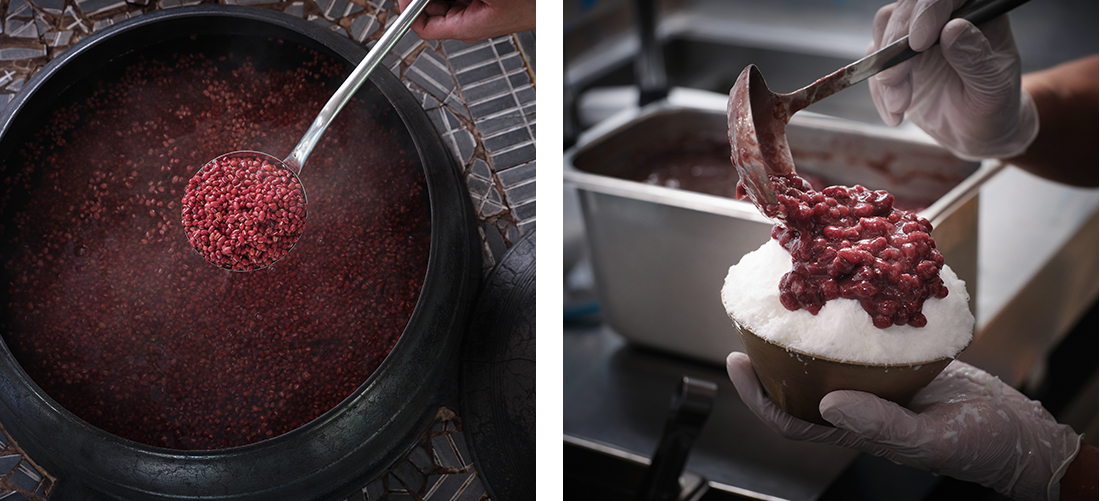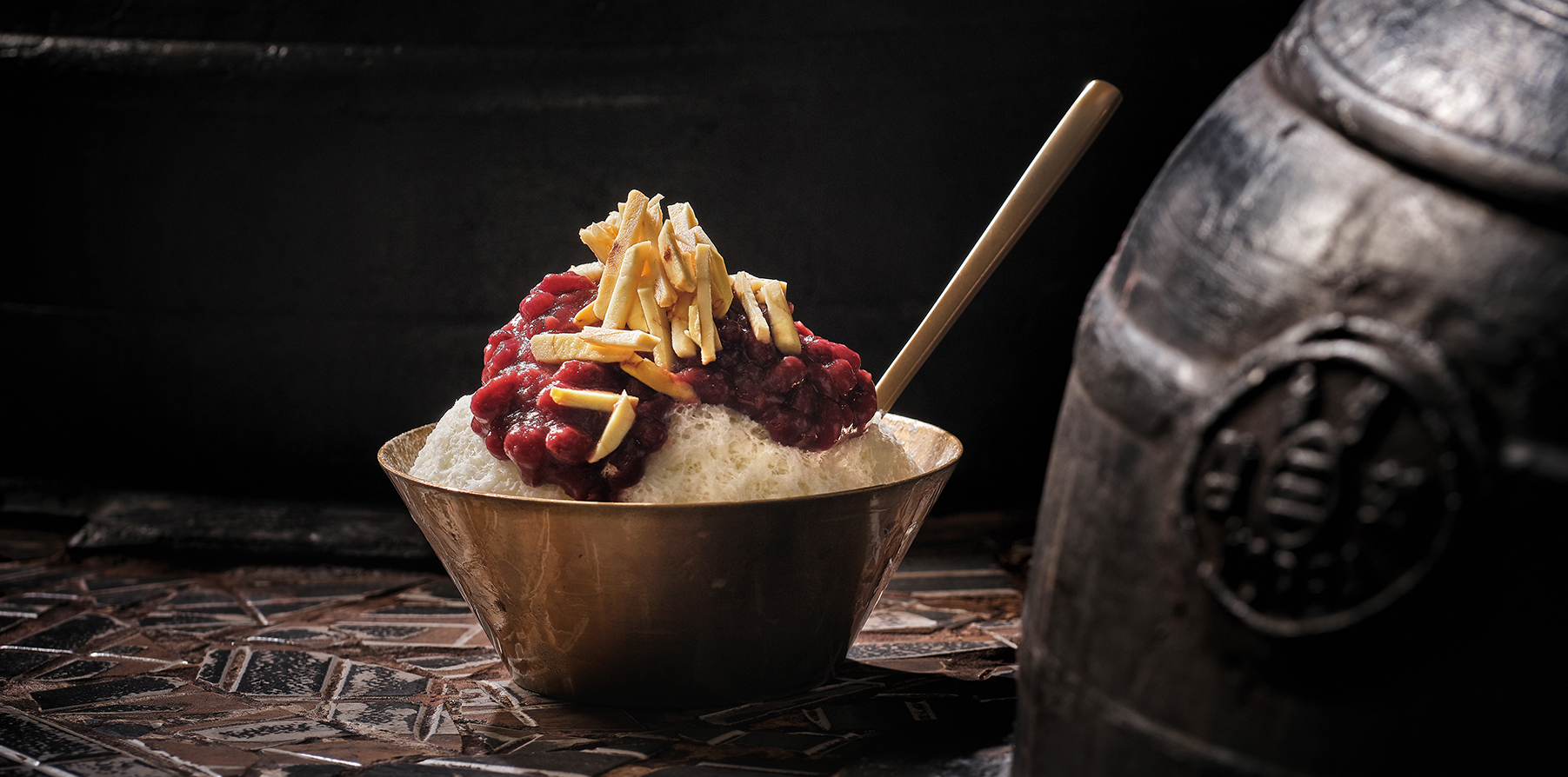Flavor
Summer Delight
Bingsu
The shaved ice treat bingsu is neither a passing trend nor exclusive to Korea. Most of Asia also has regional takes of the snack, often topped with tropical delicacies. Yet in nowhere else are the versions of bingsu as varied and rapidly transformative as in Korea.
Written by
• Kim Jane
Photographed by• Studio Kenn
Surprisingly, bingsu can be traced way back to the Joseon Dynasty (1392-1910). Ice from iceboxes called seobingo or bingo were shaved into flakes and mixed with pieces of fruit. The result at the time resembled hwachae (fruit punch) more, but is commonly considered bingsu’s earliest form.
From Luxury to Mainstream
Due to the scarcity of iceboxes, seobingo icicles were accessible only to the elite classes until 1913, when an ice manufacturer produced them for mass consumption. Bingsu merchants cropped up until the 1920s, especially in the capital Seoul, though rapid commoditization led to unsanitary production and distribution. Contrary to its exclusivity from the 1900s to the 1910s, bingsu was turning into a snack of the people.
Regardless of how widespread or cheap its distribution, bingsu had yet to become junk food health wise. Its ingredients took on variations of traditional dressings like misutgaru (roasted grain powder), toppings of rice cakes like injeolmi or chapssal tteok and eventually pat (red bean paste).
Timeless Appeal

Pat (red beans) are often boiled in large amounts. / Pat is scooped up atop a single serving of patbingsu (shaved ice dessert with red bean paste). One serving of bingsu typically serves two to three people.
For those less familiar with East Asian desserts, pat boiled with sugar might seem an odd pair for shaved ice. But fillings featuring both ingredients are frequently used in Korean snacks, whether in summer or winter. Though the traditional pat fillings usually consist of mashed beans, the red bean paste used to top off bingsu retains its bean shape.
The addition of pat to bingsu is considered to have first occurred when Korea was under imperial Japan, but the patbingsu combination is said to have originated on Korean territory. After foreign influences entered the country after the Korean War, mass-produced sweets were used as toppings like whipped cream, cereal, syrup, maraschino cherry, fruit cocktail, jelly and condensed milk, plus healthier commodities like nuts.
Constant Innovation
Classic versions of bingsu remain popular, especially patbingsu, but an eclectic array of fruit-flavored concotions also garner a huge following. Mango is a top choice and cafes of varying specializations feature berry bingsu topped with strawberries, blueberries and raspberries.
Like most Korean food trends, bingsu has a host of flavors and ingredients. Chocolate, coffee, sesame (heugimja) and matcha are now standard options, but despite steady sales, these pale in novelty to the more recent offerings featuring like melon, tiramisu, cheesecake, affogato, mint chocolate and Oreo cookies.
Amidst the vast assortment of bingsu creations, a major change has occurred in their commercial versions. In the early to mid-2010s as Korea’s dessert market surged in size, shaved milk (nunkkot) entered the mainstream market to compete with shaved ice. Nunkkot got its name, which means “snow flower” in Korean, for its snowflake-like appearance. Though the milk-shaving machinery was costly for most coffee shops at the time, nunkkot bingsu has since firmly secured its culinary place in the country.

As social distancing is the new norm this summer, hotels have introduced new bingsu package options. Original bingsu at the Lobby Lounge of Grand InterContinental Seoul Parnas is available in a single serving. © Grand InterContinental Seoul Parnas & InterContinental Seoul COEX
Multiple Demographics
From general cafes, luxury restaurants and specialty franchises to neighborhood stores, bingsu in Korea is easy to find in summer. In the high-end category, bingsu with Jeju apple mango, topped with the juiciest and top-rated mangoes, is a trendsetter spawned by hotels to supplement their dessert options. Many other options offer either fruity or healthy ingredients like honey, fruit or root preserves.
For less frills, convenience stores in summer offer takeout and packaged bingsu. Contrary to the standard serving for two to four people, these versions are often sold as a single serving, thus catered to the growing trend of one-person households in Korea.
Befitting the modern consumer’s preference for delivery food, bingsu is also a steady seller on delivery apps, esp. amid social distancing in the pandemic era.
Korea’s quintessential summer snack appeals to a variety of tastes and people, whether those longing for the classic served with red bean paste on top or the younger generation eyeing a vast array of new flavors and options.



















